

System failures are inevitable, but how organizations handle them defines their success. Site Reliability Engineering (SRE) and DevOps have emerged as two leading approaches to improving system performance and resilience. While both prioritize bridging the gap between development and operations, they follow distinct methodologies.
Unplanned downtime can cost businesses an average of $300,000 per hour, with some organizations reporting costs exceeding $1 million per hour. DevOps fosters a culture of collaboration, whereas SRE applies engineering principles to operations, focusing on automation and monitoring.
This blog examines the similarities and key differences between Site Reliability Engineering (SRE) and DevOps. Be ready to learn how organizations can effectively integrate them for enhanced system reliability. Let’s dive in!
DevOps is a software development methodology that integrates development (Dev) and operations (Ops) teams to enhance collaboration, streamline workflows, and accelerate software delivery. It emphasizes automation, continuous integration/continuous deployment (CI/CD), and a culture of shared responsibility to improve software quality and system reliability.
Key principles of DevOps:
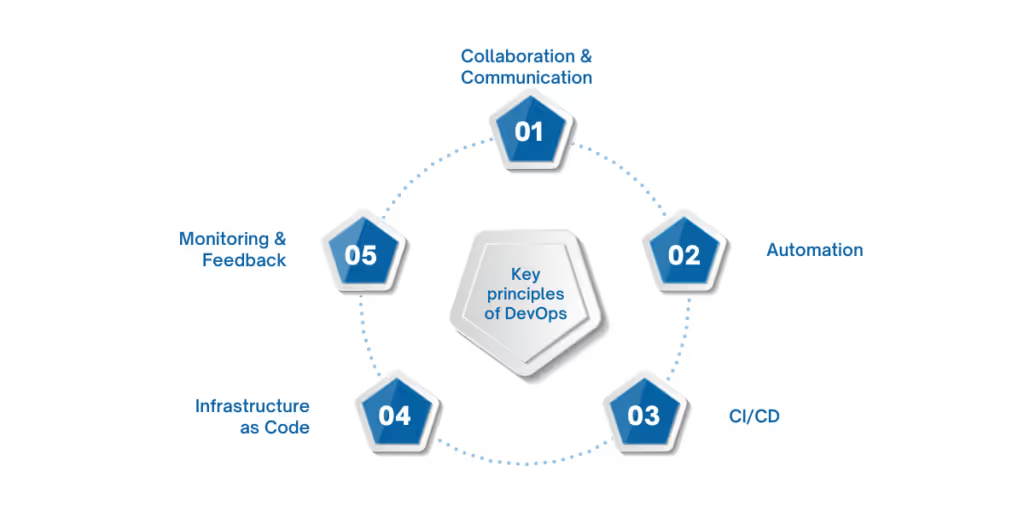
By fostering agility and efficiency, DevOps has transformed modern software delivery. However, while DevOps focuses on culture and collaboration, Site Reliability Engineering (SRE) takes a more structured, engineering-driven approach to operational reliability. Let’s talk about SRE in details.
Site Reliability Engineering (SRE) is a discipline that applies software engineering principles to IT operations to ensure system reliability, scalability, and performance. Originally developed at Google, SRE emphasizes automation, monitoring, and proactive incident management to maintain highly available systems while minimizing operational toil.
Key principles of SRE:
While SRE shares many principles with DevOps, it takes a more quantitative and engineering-focused approach to reliability. The next section explores the similarities between DevOps and SRE, highlighting their common goals and practices.
Both DevOps and Site Reliability Engineering (SRE) aim to improve software delivery, operational efficiency, and system reliability. They promote automation, collaboration, and continuous improvement to streamline development and operations.
While their methodologies differ, their core objectives align, ensuring that software systems are scalable, resilient, and high-performing. Here is a comprehensive look at their similarities:
AspectDevOpsSREGoalImprove collaboration between development and operationsEnsure reliability and efficiency of IT operationsAutomationAutomates testing, deployment, and monitoringAutomates operations to reduce manual toilContinuous ImprovementFocuses on iterative improvements in software developmentUses feedback loops and postmortems to enhance reliabilityMonitoring & PerformanceImplements monitoring tools for performance trackingUses monitoring and observability for proactive issue detectionIncident ManagementFocuses on fast recovery through CI/CD and rollback strategiesImplements structured incident response and blameless postmortemsScalability & EfficiencyUses Infrastructure as Code (IaC) to manage resources efficientlyFocuses on capacity planning and resource optimizationCultural ApproachEncourages a collaborative Dev and Ops cultureBridges the gap between development and operations through engineering principles
Despite these shared principles, DevOps and SRE differ in their execution strategies and focus areas. The next section delves into the differences between DevOps and SRE, highlighting how each approach uniquely contributes to system reliability.
DevOps focuses on culture, collaboration, and process improvements, while SRE takes an engineering-driven approach to reliability with measurable targets.
DevOps fosters agility in development and deployment, whereas SRE ensures systems remain stable and scalable by applying software engineering principles to IT operations. Here is a comprehensive look at their differences:
AspectDevOpsSREPrimary FocusEnhancing collaboration between development and operationsEnsuring system reliability through engineering practicesApproachCultural shift and process automationSoftware engineering applied to IT operationsReliability StrategyEncourages best practices but does not define strict reliability metricsUses SLOs, SLIs, and error budgets to maintain reliabilityAutomation ScopeAutomates CI/CD pipelines, testing, and infrastructure provisioningAutomates operational tasks to reduce toil and improve system resilienceIncident ManagementFocuses on quick recovery using CI/CD and rollback strategiesImplements structured incident response with blameless postmortemsOwnership ModelShared responsibility between Dev and Ops teamsSRE team takes ownership of system reliability, reducing operational burden on developersScalability FocusEnsures scalability through Infrastructure as Code (IaC) and cloud-native approachesProactively plans capacity and optimizes resource allocationImplementationFlexible, varies based on organizational needsFollows a structured, engineering-driven framework
Both methodologies play a crucial role in modern software development and IT operations. To maximize their benefits, organizations must adopt them strategically. The next section explores the key factors for successfully implementing DevOps and SRE in an enterprise environment.
Adopting DevOps and Site Reliability Engineering (SRE) requires a structured approach that aligns with an organization's goals, culture, and operational needs. While both methodologies aim to enhance software delivery and reliability, their implementation strategies differ. Below are the key factors for successfully adopting each approach.
To effectively implement DevOps, organizations must foster a culture of collaboration and automation while ensuring continuous improvement. The following factors are crucial for its success:
DevOps is not just about tools and automation; it requires a fundamental shift in organizational culture. Teams must move away from traditional siloed structures and embrace a collaborative mindset where development, operations, and even security teams work together. Encouraging shared ownership, open communication, and collective responsibility ensures smoother implementation and long-term success.
A key principle of DevOps is reducing manual intervention through automation. Implementing CI/CD pipelines enables frequent and reliable software releases. Infrastructure as Code (IaC) helps in managing and provisioning infrastructure automatically, ensuring consistency across environments. Automated testing further enhances efficiency, reducing errors and improving deployment speed without compromising software quality.
Organizations must invest in monitoring solutions that provide real-time insights into application performance, system health, and security threats. Logging, alerting, and observability tools help detect issues before they impact users. Additionally, continuous feedback loops allow teams to address performance bottlenecks, optimize resources, and enhance overall system reliability while maintaining agility in development.
Security should not be an afterthought in DevOps workflows. DevSecOps embeds security practices throughout the software development lifecycle, ensuring vulnerabilities are identified and mitigated early. Automated security testing, compliance checks, and threat monitoring reduce risks. By integrating security into CI/CD pipelines, teams can deploy applications faster while maintaining robust security postures.
Implementing DevOps at scale requires strong leadership support. Without executive buy-in, transformation efforts may face resistance from teams accustomed to traditional workflows. Leaders should advocate for DevOps adoption by aligning it with business goals, investing in necessary resources, and fostering a culture of continuous learning and experimentation to drive organizational change.
Adopting DevOps requires upskilling teams in modern tools, methodologies, and best practices. Organizations should provide hands-on training in containerization (Docker, Kubernetes), automation frameworks, cloud platforms, and CI/CD tools. Encouraging certifications and mentorship programs ensures teams stay up-to-date with evolving DevOps trends, improving efficiency and software delivery speed.
Implementing Site Reliability Engineering (SRE) requires a structured engineering approach to system reliability and operational efficiency. The following factors contribute to its successful adoption:
SRE relies on Service-Level Indicators (SLIs), Service-Level Objectives (SLOs), and error budgets to maintain system reliability. Organizations must set clear, measurable targets for system uptime, latency, and performance. Error budgets help teams strike a balance between innovation and stability by allowing controlled failures while maintaining overall system health.
SRE aims to minimize toil, manual, repetitive operational work that does not add lasting value. Automating routine tasks such as system monitoring, alerting, and deployment improves efficiency, freeing engineers to focus on innovation. Using self-healing mechanisms, AI-driven operations, and intelligent scaling reduces human intervention, leading to more resilient systems.
SRE teams must implement a well-defined incident response framework to minimize downtime and mitigate failures effectively. This includes real-time monitoring, automated alerts, on-call rotations, and standardized incident resolution playbooks. Additionally, blameless postmortems encourage learning from failures without fear of blame, fostering a culture of continuous improvement and resilience.
Ensuring that systems can handle increasing workloads without performance degradation is crucial for SRE. Teams must conduct regular capacity assessments, performance benchmarking, and load testing to optimize infrastructure. Auto-scaling mechanisms, cloud elasticity, and efficient resource allocation strategies enable seamless scalability while controlling costs and maintaining service reliability.
Unlike traditional operations teams, SRE works closely with developers to embed reliability principles into the software development lifecycle. By engaging early in the design and coding phases, SREs help build resilient architectures, implement failover mechanisms, and integrate observability features, preventing issues rather than reacting to them after deployment.
SRE is fundamentally an engineering approach to operations. Teams should cultivate a problem-solving mindset by applying software development principles to IT operations, writing automation scripts, and optimizing system reliability through data-driven decisions. Encouraging experimentation and embracing failure as a learning opportunity helps drive continuous improvements in reliability and efficiency.
Successfully adopting DevOps and SRE requires a balance between cultural transformation and engineering discipline. If you can implement these frameworks strategically then you can achieve both rapid software delivery and robust system performance.
Selecting the right tools is essential for successful DevOps implementation, as they streamline development, deployment, and monitoring processes. Below are five widely used DevOps tools that enhance automation, collaboration, and system reliability.

Jenkins is an open-source automation server widely used for CI/CD. It supports numerous plugins, enabling integration with various tools and frameworks. Jenkins automates tasks like building, testing, and deploying applications across different environments. Its declarative pipeline feature allows developers to define complex workflows using a simple syntax.
Key features

GitLab CI/CD is a built-in automation tool within GitLab that enables seamless integration and deployment workflows. It uses YAML-based configuration files to define pipelines, supporting multiple job stages such as build, test, and deploy. GitLab CI/CD offers features like auto-scaling runners, robust security policies, and integration with Kubernetes for containerized deployments.
Key features

Ansible is an open-source configuration management tool that automates system administration tasks using YAML-based playbooks. It operates without an agent over SSH, simplifying deployment and reducing overhead. Ansible supports idempotent execution, ensuring consistent system states without redundant changes.
Key features

Puppet is a declarative configuration management tool designed for automating infrastructure provisioning and maintenance. It uses a client-server model where agents pull configurations from a central server. Puppet employs a domain-specific language (DSL) to define system states and apply changes incrementally.
Key features
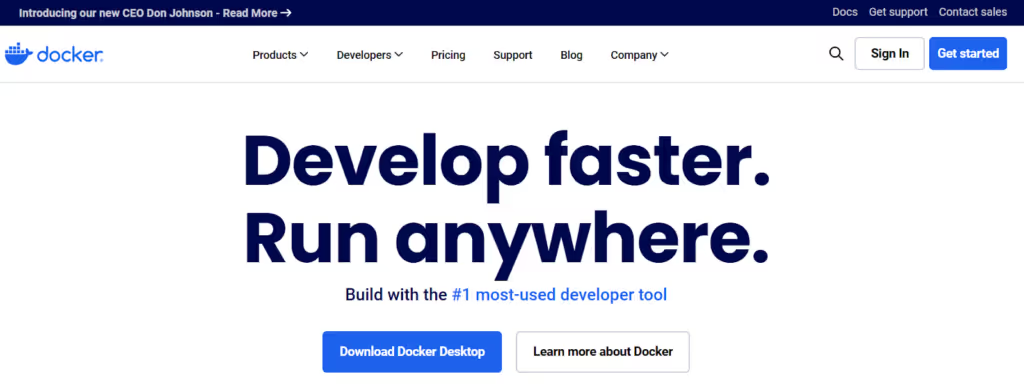
Docker is a containerization platform that packages applications and dependencies into isolated containers. It uses a layered file system to optimize storage and supports multi-stage builds for efficient image creation. Docker Compose simplifies multi-container application management, while Docker Swarm provides native clustering capabilities.
Key features
These are some of the most effective DevOps tools available in the current market. Now, we will see a few SRE tools for your business!
Effective SRE implementation relies on specialized tools that enhance system reliability, automate operations, and improve incident management. Here are five essential SRE tools:
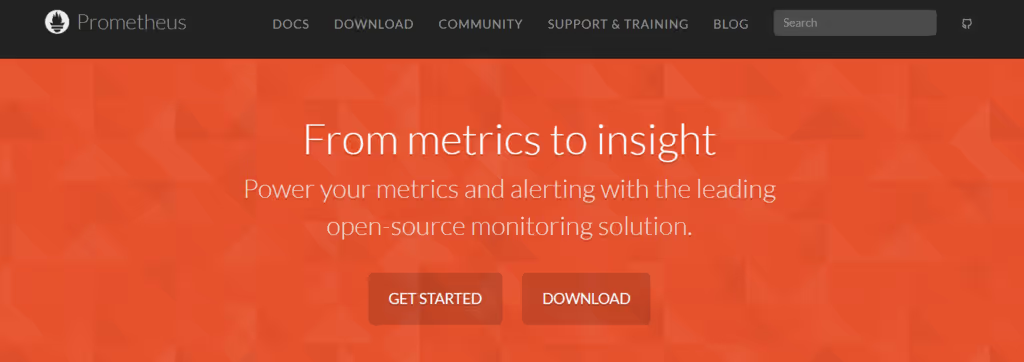
Prometheus is an open-source monitoring and alerting tool designed for high scalability and reliability. It collects time-series data from services and infrastructure, allowing SRE teams to analyze system health and performance trends. With its powerful query language (PromQL), Prometheus helps detect anomalies, enabling proactive incident response and capacity planning.
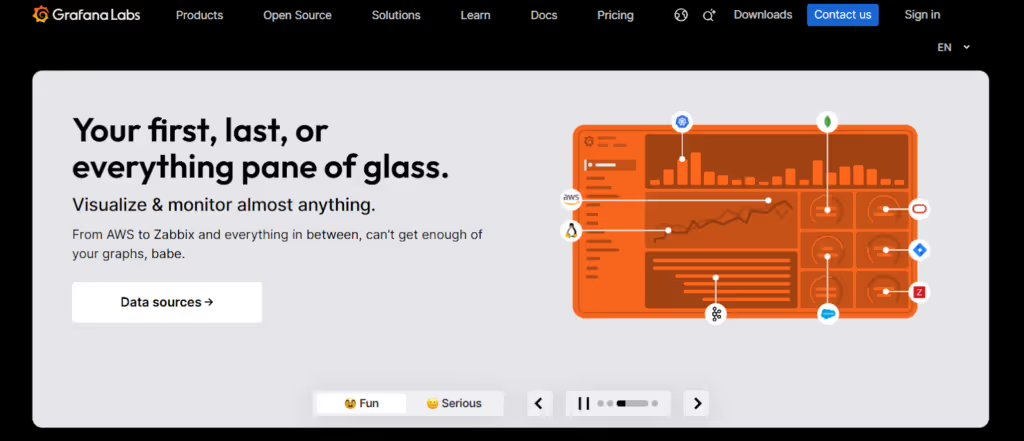
Grafana is a visualization tool that works alongside Prometheus and other data sources to create interactive dashboards. It helps SRE teams track key metrics, spot trends, and troubleshoot system issues efficiently. Grafana’s real-time visual analytics make it easier to identify performance bottlenecks and optimize resource utilization for improved reliability.

New Relic provides full-stack observability with in-depth insights into application performance, distributed systems, and infrastructure health. It enables SRE teams to monitor real-time traffic, track dependencies, and identify latency issues. With AI-driven anomaly detection, New Relic helps minimize downtime by providing early warnings and root cause analysis.
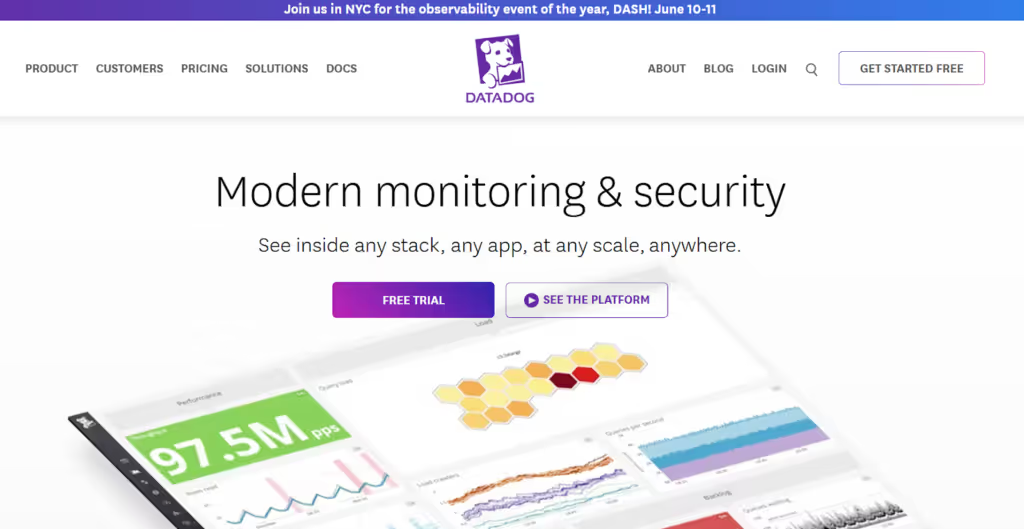
Datadog is a cloud-based monitoring and security platform that provides deep visibility into infrastructure, applications, and logs. SRE teams use it to detect performance issues, monitor distributed systems, and analyze logs in real time. With its unified monitoring approach, Datadog helps prevent outages and optimize cloud resource utilization.

PagerDuty is an incident management platform that automates alerting and on-call scheduling to ensure rapid response to system failures. It centralizes incident notifications across multiple channels, enabling SRE teams to prioritize and resolve issues faster. PagerDuty reduces downtime by streamlining communication and escalation workflows.
These SRE tools play a crucial role in ensuring system reliability, proactive monitoring, and efficient incident management. By integrating the right combination of these tools, organizations can enhance their observability, automate responses, and minimize downtime.
While DevOps and Site Reliability Engineering (SRE) follow different methodologies, they share a common goal of improving system reliability, scalability, and efficiency. DevOps emphasizes collaboration and automation, while SRE applies engineering principles to operations with a focus on reliability.
Both require strong organizational support, cultural transformation, and data-driven decision-making for successful implementation. If you can effectively implement these frameworks, you can achieve faster deployments, reduced downtime, and enhanced system resilience.
To level up your SRE and DevOps strategies, try our SRE & DevOps Services. At WaferWire, we empower your growth with tailored cloud solutions and AI strategies that address your unique challenges.
We can help you with continuous software delivery through automation, cloud-native solutions, real-time monitoring, and custom SRE and DevOps strategies. Contact us today to get started with your advanced SRE and DevOps journey!

